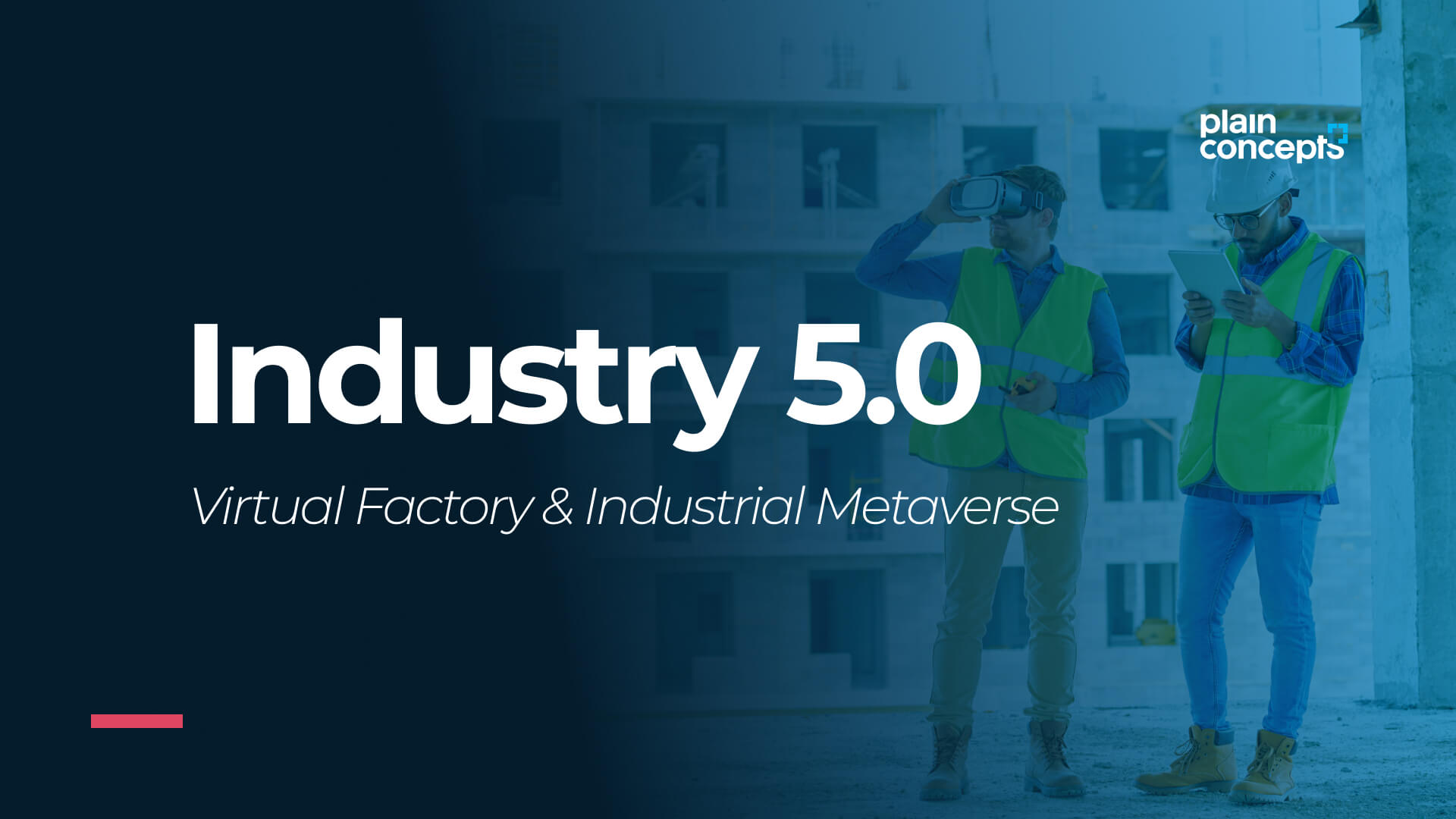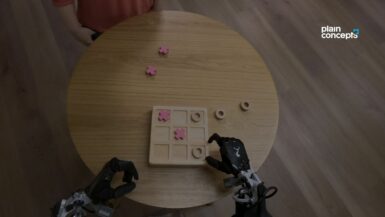
Industry 5.0 | The new Business Revolution
For many companies, Industry 4.0 is the new revolution on which they must focus their business strategy. However, we are facing a shift in focus from economic value to a broader concept of social value and welfare.
Industry 5.0 has already begun, and its applicability goes far beyond industry, extending to all sectors and organizations. That is why it is so important that you start familiarising yourself with this concept and change your business strategy towards this new revolution as soon as possible. We tell you how!
Accelerate the journey to building your sustainable, resilient and human-centric organization. Overcome today’s smart factory challenges, extend the data-centric industry 4.0 approach and prepare for tomorrow’s virtual revolution.
What is Industry 5.0
The concept of Industry 5.0 is a fairly recent term used by the European Union on several occasions due to its importance as a key driver in the economic and social transitions we are going through, and that goes beyond efficiency and productivity as sole objectives.
Industry 5.0, also called the Fifth Industrial Revolution, reflects a shift in focus from an economic approach to a focus on social value and well-being. It is a new phase of industrialization in which humans work together with advanced technology and AI-driven robots to improve processes at work.
It encompasses many processes, not just manufacturing, and is enabled by developments in IT, including artificial intelligence, automation, data, IoT, Machine Learning, and virtualization… The most important difference with Industry 4.0 is that it puts worker well-being at the heart of the production process, bringing prosperity beyond jobs and growth.
Society 5.0 and Industry 5.0
The concepts of Society 5.0 and Industry 5.0 are related. Both refer to a fundamental shift in our society and economy towards a new paradigm.
Society 5.0 attempts to balance economic development with resolving societal and environmental problems. It is not restricted to the manufacturing sector but addresses larger social challenges based on integrating physical and virtual spaces. Society 5.0 is a society in which advanced IT technologies, the Internet of Things, robots, artificial intelligence, and augmented reality are actively used in everyday life, industry, healthcare, and other spheres of activity for economic advantage and the benefit and convenience of each citizen.
Our approach
We believe in this transition to the modern industrial revolution and focus on four main pillars of action toward achieving Industry 5.0.
Our approach to industrial modernization and technology as an enabling lever involves the adoption of four major interconnected concepts that we believe are fundamental in establishing the long-term strategy of any organization.
The idea is simple: achieve virtual environments and representations of your real world that will enable you to establish a new paradigm and core values in the organization.
We believe that the best way to navigate toward Industry 5.0 is by modeling the real world using digital twins and taking advantage of the endless possibilities they bring.
Technologies
The vision for ‘Industry 5.0’ we propose moves past a narrow and traditional focus on technology-economic-enabled growth of the existing extractive, production, and consumption-driven economic model to a more transformative view of growth that is focused on human progress and well-being based on reducing and shifting consumption to new forms of sustainable, circular and regenerative economic value creation and equitable prosperity. Rather than representing a technological leap forward, Industry 5.0 actually nests the Industry 4.0 approach in a broader context, providing regenerative purpose and directionality to the technological transformation of industrial production.
Industry 5.0 should not be understood as a chronological continuation or an alternative to, the existing Industry 4.0 paradigm. It is the result of a forward-looking vision, a way of framing how industry and emerging societal trends and needs will co-exist and align. As such, Industry 5.0 complements and extends the features of Industry 4.0 while aligning them with the new demands.
Virtual
The consolidation of new enabling technologies, such as AI, machine learning, and predictive analytics, has expanded the use of digital twins beyond its original intended usage. Today, they are quickly expanding to take on various forms across industries, enabling companies to forecast and create with more accuracy and foresight. It may even hold the key to the success of the metaverse.
With the metaverse on the horizon, the use of digital twins has expanded to include buildings, factories, cities, people, and processes, extending the concept even further. The technology can bring much of the real-world environment into the virtual one.
The ability to run accurate simulations extends to the metaverse, where they can be applied to interactions with virtual users and worlds. Ultimately, the metaverse can be understood as the future Internet, the connective tissue that binds many different worlds together, while the digital twins may come to represent the worlds (or part of the worlds) themselves. Digital twins are a core element of the metaverse because they digitally represent the physical world and enable users to interact with the digital versions of people, places, and things from any location.
Human-centric
The human-centric approach puts core human needs and interests at the heart of the production processes. It empowers workers through digital devices, endorsing a human-centric approach to technology. Technology serves people. It is not only about asking what we can do with new technology but rather using technology to adapt the production processes to the worker’s needs.
It is everything about how to support, assist, and empower your workforce with task and environment insights leading to safety recommendations and warnings. At the same time, you relieve them of low-value tasks. The worker is more empowered, and the working environment is more inclusive. To achieve this, workers are to be closely involved in the design and deployment of new industrial technologies, including robotics and AI.
The Extended Operator is another key approach, which aims at expanding the capabilities of the industrial worker with innovative technological means rather than replacing the worker with robots. This means complementing and extending operators’ capabilities with augmented reality, virtual reality, wearable devices, intelligent personal assistants, collaborative robots, Big Data, analytics, or even Exoskeletons. With this approach, humans remain at the center of the production process, and technology maximizes the benefits for both the company and the worker.
 Sustainable
Sustainable
For the industry to respect planetary boundaries, it needs to be sustainable. It needs to develop circular processes that reuse, re-purpose and recycle natural resources and reduce waste and environmental impact. Sustainability means reducing energy consumption and greenhouse emissions to avoid depletion and degradation of natural resources. Technologies like AI and additive manufacturing can play a large role here by optimizing energy efficiency and consumption, resource efficiency, and minimizing waste.
The idea is to combine competitiveness and sustainability, allowing the industry to realize its potential as one of the pillars of transformation. The industry has to pursue new game-changing solutions, put them into practice, and understand the implications of reworking its business models.
Resilient
Resilience refers to the need to develop more robustness in industrial production, arming it better against disruptions. It is about being able to deal with uncertainty and change and avoid the fragility of our current approach to globalized production. It should be balanced by developing resilient strategic value chains, adaptable production capacity, and flexible business processes.
The industry of the future needs to be equipped to adapt quickly to changing circumstances for key-value chains to secure its role as a sustainable engine for prosperity. A resilient industry can deal with vulnerabilities on many levels, including the factory floor, supply network, and industrial system levels.
Digital technologies will play a special role. While digital interconnection will enable a host of resilient technologies, including data gathering, automated risk analysis, and automated mitigation measures, increased dependence on digital technologies exposes the industry to technical disruptions due to malfunctions and cyberattacks. Developing the cybersecurity required for the resilient industry of the future will also play a key role.
Industry 5.0´s vision becomes reality thanks to our state-of-the-art technology solutions and products to lay the foundation for this modern industrial revolution.






